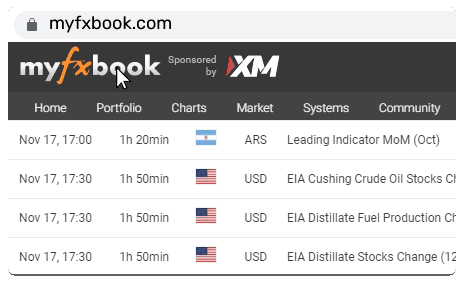Easing Inflation in Australia How Lower Prices Could Lead to Rate Cuts Soon

The latest figures for Australia’s Consumer Price Index (CPI) reveal a persistent cooling of inflationary pressures, as indicated by a modest quarterly rise of just 0.22% in Q3 2024. This subdued increase has resulted in an annual CPI growth rate of 2.81%, slightly below market forecasts. Much of this reduced headline inflation can be attributed to newly introduced household electricity subsidies, which eased the CPI by approximately 0.4 percentage points, cushioning households from higher energy costs and helping to moderate overall inflation.
Australia CPI
Source: Finlogix Economic CalendarThe Reserve Bank of Australia’s (RBA) preferred inflation metric, the trimmed-mean CPI—which filters out highly volatile price categories—recorded a quarterly increase of 0.78%, translating to a 3.54% annual gain. This trimmed-mean figure closely aligned with RBA projections and highlights a tapering in the pace of core inflation across the year. The data marks a steady decline in underlying inflation momentum, with sequential quarterly growth easing from 1.01% in Q1 2024 to 0.78% in Q3. Consequently, the annualized trimmed-mean rate for September stands at 3.2%, inching closer to the RBA’s target inflation range of 2-3%, suggesting that inflation could be stabilizing within the bank's preferred thresholds in the coming months.
AUDUSD 5min Chart Reaction to CPI
Source: Finlogix ChartsCommodity prices during the quarter presented a mixed landscape, driven by substantial reductions in specific categories. Electricity costs, for instance, fell by 17.3%, while fuel prices dropped by 6.7%, reflecting the combined effects of governmental subsidies and recent international oil price fluctuations. Conversely, food prices experienced a modest uptick, while core goods prices—excluding the more variable categories of fuel and fresh food—saw a slight quarterly increase of 0.5%, with an annual rate now at 2.5%. Within these categories, prices of clothing, footwear, and new motor vehicles declined, while prices rose for new dwellings, tobacco, alcohol, and furniture, illustrating a nuanced inflation landscape.
Services prices saw a quarterly uptick of 1.1%, translating to a 4.6% year-over-year increase. This sector’s inflation was influenced by seasonal adjustments in property rates and a renewed demand for holiday travel, highlighting the impact of post-pandemic shifts in consumer behaviour. While rent growth has eased somewhat, costs for essential services—such as medical, financial, and hospital services—remained largely stable, indicative of a broader moderation in service-related inflation.
September’s monthly CPI data continues to reinforce this narrative of softening inflation, with the headline CPI rising by only 0.1% for the month. Year-over-year, the CPI for September was up 2.1%, with declines across electricity, new car, and dwelling prices supporting the monthly trend. This ongoing deceleration provides further evidence of reduced inflationary pressures, likely signalling that the RBA's monetary policies and government interventions are working as intended to cool the economy.
Looking ahead, this inflationary cooling raises the possibility that the RBA may consider interest rate cuts by early 2025. Analysts anticipate that such cuts may occur gradually, potentially at a pace of 0.25% per quarter, ultimately reaching a projected target rate of around 3.25%. Should the trend in moderated inflation continue, driven by factors such as a stabilizing labour market and targeted subsidies, the RBA may find itself in a favourable position to adjust rates, thereby fostering sustainable economic growth while keeping inflation well within target ranges.
This content may have been written by a third party. ACY makes no representation or warranty and assumes no liability as to the accuracy or completeness of the information provided, nor any loss arising from any investment based on a recommendation, forecast or other information supplies by any third-party. This content is information only, and does not constitute financial, investment or other advice on which you can rely.



















